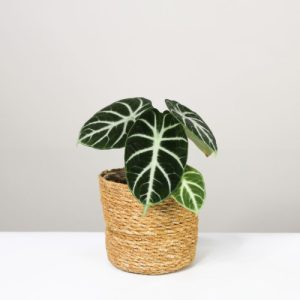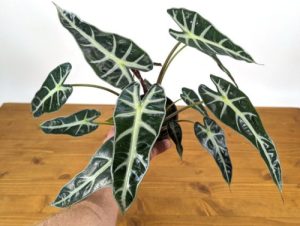- English
- Chinese
- French
- German
- Portuguese
- Spanish
- Russian
- Japanese
- Korean
- Arabic
- Irish
- Greek
- Turkish
- Italian
- Danish
- Romanian
- Indonesian
- Czech
- Afrikaans
- Swedish
- Polish
- Basque
- Catalan
- Esperanto
- Hindi
- Lao
- Albanian
- Amharic
- Armenian
- Azerbaijani
- Belarusian
- Bengali
- Bosnian
- Bulgarian
- Cebuano
- Corsican
- Croatian
- Dutch
- Estonian
- Filipino
- Finnish
- Frisian
- Galician
- Georgian
- Gujarati
- Haitian
- Hausa
- Hawaiian
- Hebrew
- Hmong
- Hungarian
- Icelandic
- Igbo
- Javanese
- Kannada
- Kazakh
- Khmer
- Kurdish
- Kyrgyz
- Latin
- Latvian
- Lithuanian
- Luxembou..
- Macedonian
- Malagasy
- Malay
- Malayalam
- Maltese
- Maori
- Marathi
- Mongolian
- Burmese
- Nepali
- Norwegian
- Pashto
- Persian
- Punjabi
- Serbian
- Sesotho
- Sinhala
- Slovak
- Slovenian
- Somali
- Samoan
- Scots Gaelic
- Shona
- Sindhi
- Sundanese
- Swahili
- Tajik
- Tamil
- Telugu
- Thai
- Ukrainian
- Urdu
- Uzbek
- Vietnamese
- Welsh
- Xhosa
- Yiddish
- Yoruba
- Zulu
- Kinyarwanda
- Tatar
- Oriya
- Turkmen
- Uyghur

Zomera za Alocasia are well-known in the horticulture scene for their unusual shapes and amazing foliage. Not just for their great size, but also for their diversity of forms and textures, these plants’ leaves are among their most arresting characteristics. From heart-shaped to arrow-shaped, from smooth surfaces to patterns with noticeable veins, each leaf of Alocasia plants grabs people’s attention with its variety and visual impact. She is a masterwork of nature.

Chinjoka cha alocasia
Nthawi zambiri chachikulu komanso chandiweyani, masamba amakhala ndi mbali zosalala kapena zosiyanitsa. Pamodzi ndi kuwonjezera phindu lokongoletsera zambiri, izi zimayatsa masamba pazikhalidwe ndi dzuwa. Ngakhale mbewu za Ancacasia zimakhala ndi masamba obiriwira amdima, hue imatha kuwulula ma gradid obiriwira kukhala chikasu obiriwira popumira ndikukula, motero ndikuwonjezera kukongola kosatha.
Kupatula pakupulumuka kwawo, masamba a Alcocasia mbewu ndi chuma m'mitima ya omwe amakonda kulima. Kukula kwake ndi kuwonetsa kwawo sikumangowonetsa momwe mbewuzo komanso zimagwirizanitsa mwanzeru zaluso zaulimi ndi kukongola kwachilengedwe. Kuwerenga kwambiri mikhalidwe ya masamba a fodya kumawonetsa zinsinsi zowonjezera za zinthu zozizwitsazi.
Masamba a Famasia Tsamba ndi Zochita
Not only do alocasia leaves’ unusual textures and intricate veining appeal, but their physiological purposes depend on these qualities as well. Water and nutrients are carried via the veins of a leaf, often known as vascular bundles; their distribution patterns range from parallel veins to reticulated veins, each pattern suited to the growth requirements and environmental circumstances of the plant.
In Alocasia, the veins can show a clear network of main and subsidiary veins that weaves a complicated pattern. This arrangement not only increases the leaf’s support but also guarantees that all of its components get enough water and nutrients, therefore improving the transport efficiency.
The leaves have similarly remarkable texture. Although Alocasia leaves typically have a smooth surface, in certain kinds little structures on the surface of the leaves or protrusions of the veins may cause minor bumps and grooves to be seen. These textures not only improve the leaves’ appearance but could also aid to lower water evaporation by adding another layer of protection for them.
Zokongoletsera zolemera kwambiri zamaluwa komanso mikhalidwe yachilengedwe yomwe imapangitsa kuti alcalial azikhala bwino mu chilengedwe cha zinthu zachilengedwe amatanthauzira mitsemphayo ndi mawonekedwe a mbewu izi.
The Alcasia Leaf Copy Cycle
Alocasia’s leaf development cycle is a normal one, from budding to maturity then to senescence and last shedding. This cycle not only reveals the consistency of plant development but also a means of adaptation for plants against environmental changes.
Masamba atsopano amakula kuchokera masamba masamba pa budge. Nthawi zambiri osalimba komanso kupindika, masamba omwe amapangidwa kumene amafunika kutentha kwambiri komanso chinyezi kuti chizilimbikitse. Pakali pano, masamba amakula mwachangu ndipo amakhudzidwa kwambiri ndi malo ozungulira.
The leaves progressively unfurl and achieve their full shape over time. Complete structure and purpose abound from mature leaves, which also enable efficient photosynthesis and transpiration. Right now, the leaves’ texture and color are also most different.
Kutsatira chokhwima, masamba adzayamba kukula pomwe kukula kwake ndi mawonekedwe awo amayandikira kwambiri komanso photosynthesis pa bwino. Kwa mbewu za Alcasasia pa siteji iyi, masamba awo amapereka mphamvu zambiri komanso michere.
Masamba amakhwima pang'onopang'ono ngati nyengo kapena zochitika zachilengedwe zimasintha. Masamba a Sheanent amatha kuwoneka ochepera, opepuka mu utoto, komanso mitsempha yodziwikiratu. Mu chomera moyo, izi ndizochitika mwachizolowezi komanso chenjezo kuti mbewuyo ikukonzekera kukula kwatsopano.
Pambuyo pake, masamba okalamba adzagwera pachomera kuti akapereke malo ndi zinthu zothandizira kukula kwatsopano. Pogwiritsa ntchito tsamba kugwetsa, chomera chimathandizira kuchepetsa mphamvu zochepetsetsa ndipo chilimbikitso chatsopano.
Apart from reflecting the physiological condition of the plant, Alocasia’s leaf development cycle is a crucial guide for garden management. Knowing this cycle will enable those who like gardening to maintain the plants better and guarantee their healthy developm
Zikhalidwe ndi zoyerekeza za zikhalidwe za kakombo masamba
Ndi masamba ake odabwitsa komanso mawonekedwe osiyana, chomera cha kakombo cha calla chili ndi chophiphiritsa chachikulu ndipo chimakhala chitukuko zosiyanasiyana.
Chifukwa cha kukula kwawo kwakukulu ndi mphamvu, masamba a mitengo ya Calla Lily amaganiziridwa mu chitukuko chambiri monga chizindikiro cha chuma komanso kuchita bwino. Nthawi zambiri amagwiritsa ntchito kukongoletsa zipembedzo ndi zolapa, amaimirira kuti azipeza ndalama zambiri. Masamba a calla masamba amagwiritsidwa ntchito ngati zokongoletsera m'malo ena pamiyambo yachikhalidwe kuyimira chitukuko ndi chisangalalo cha moyo wabanja.
Furthermore relevant to spiritual and religious views are the calla lily plant’s leaves. Some civilizations see them as holy and link them to spiritual cleansing and relationships to the gods. Because of their great vigor and fast development, the leaves of the calla lily are seen as an emblem of rebirth and eternity.
Makina amakono nthawi zina amafotokoza mtundu wa malo otentha komanso kukongola kwachilengedwe pogwiritsa ntchito masamba a calla kakombo wa kakombo. Kukhalapo kwawo kumatha kupatsa mwayi wokhala ndi moyo wina ndikuimira mgwirizano wa Harmonic.
Ndizosangalatsa kudziwa kuti chomera cha Calla Lily chitha kulumikizidwanso pazikhalidwe zina ndi matanthawuzo ena olakwika. Mwachitsanzo, nthawi zina zimagwiritsidwa ntchito kuimira zovuta komanso zovuta chifukwa zingakhale zovuta kusamalira zochitika zina.
Kuchokera pa chuma komanso kudzipangitsa kuti azikhala achipembedzo komanso achipembedzo. Amapanga chinthu cha anthu komanso chitukuko. Kudziwa izi kophiphiritsika kungatithandize kumvetsetsa kubzala achokasi komanso miyambo yambiri yamikhalidwe.

Alocasia
Mikhalidwe yapadera ya Alocasia genus leaves are well-known; typically, they possess these: The leaves are mostly dark green, with a smooth, shiny surface, occasionally accompanied by white or yellow marks; the veins are obvious, usually distributed in a network, which enhances the structure and transport efficiency of the leaves; the leaves are thick in texture, with smooth or wavy edges. These traits not only show the Alocasia genus plants’ environmental adaptation but also provide very great esthetic value.



